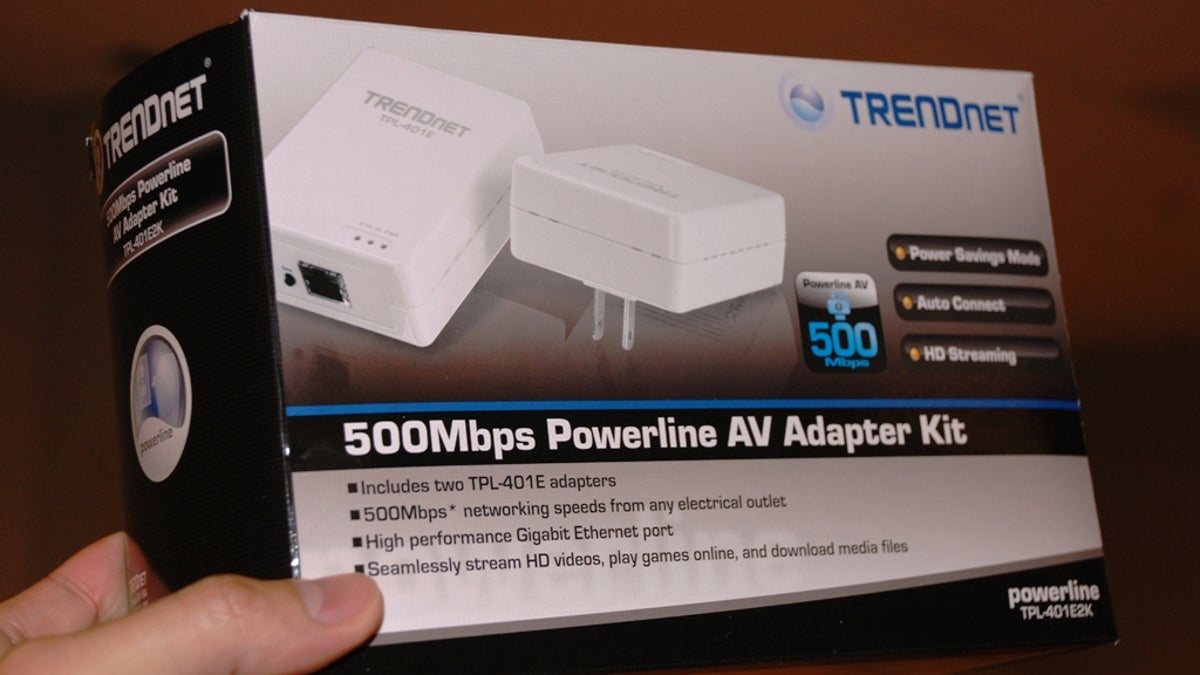What to expect in networking at CES 2011
CNET editor Dong Ngo's preview on what consumers should expect from CES 2011 in the realm of home networking.

It's predicted that 2011 is the tipping year of networking, where more electronic devices have built-in networking capabilities than computers. And this isn't a surprise; over the past few years, more and more home entertainment devices, such as flat-screen TVs, media playback devices, game consoles, and so on, include an Ethernet port. Others use USB Wi-Fi dongles to connect to a wireless network, and many even come with a built-in Wi-Fi adapter.
As more and more devices in your home scramble to find ways to connect to one another and to the Internet, the wireless network might be able to handle all of them, especially those at the far end or in the basement of the house. This is wherepowerline networking, which turns your home's electrical wiring into data cable, comes into play. And, of course, before data can be moved back and forth between different devices, it first needs to reside somewhere. This is when you need to start thinking about network storage.
With that said, these are my educated guesses on what consumers can expect to see at CES 2011 in the realm of home networking and storage.
All-in-one routers
By now, most, if not all, home users are familiar with the wireless router that handles two types of networking: wired (also known as Ethernet, which connects devices using network cables) and wireless, which allows computers and other Wi-Fi-ready devices to connect to the network and one another without being physically connected to a router or a hub.
Now if you want to use a powerline connection to extend the network to the far end of the house, you will need at least two adapters, one at the router and one at the far end. This brings up the question: why not make the router itself also work as the first adapter? After all, it needs to be connected to the wall socket anyway.
Expect to find answers to this at the upcoming CES. The idea of an all-in-one router, which can handle Ethernet, Wi-Fi, and powerline, wasfirst introduced by Atherosback in October. By early next year, you'll likely be able to purchase one of them from different networking vendors.
Routers with built-in network storage functions, namely having internal storage--such as the
Chances are you'll also find those that support Ethernet, Wi-Fi, powerline, and have built-in fast network storage capabilities.
WiDi and WHDI to be widely adopted
If you want to quickly display your laptop's screen on a big TV, currently there are two popular ways: either by using WiDi-based accessories, such as the Netgear Push2TV, or using WHDI-based accessories, such as the WiCast from Asus.
These accessories work with the TV's HDMI port and allow you to stream a computer's display onto a big-screen TV, wirelessly. In a demonstration, WHDI seems to be a lot better, as it has almost no lag, allowing for smooth video playback and even online gaming. However, both of these standards work well and share the fact that you need to use extra devices at both ends: the computer and the TVs.
Starting with CES 2011, more and more laptop as well as home entertainment devices, especially flat-screen TVs, will have WiDi and/or WHDI functionality integrated. This means you can create HDMI-like connection between them without having to use an HDMI cable.
This is actually very exciting; in the future, if one of these technologies is embedded on a smartphone or a portable game console, you can quickly display the little device's screen on a big TV just by standing within 30 feet from it. Imagine playing iPhone games using the big screen as the display and the phone as the controller, completely wirelessly and without lag.
* * *
I hope these have made at least some of you excited. Other than these, it's also predicted that USB 3.0 will soon take the place of USB 2.0 on both laptop and desktop computers. Storage vendors will introduce more and more USB external hard drives that are based on solid-state drives, that can full take advantage of USB 3.0 speeds. Personally, I hope that Intel will demo the next generation of peripheral connectivity, called Light Peak, which is estimated to be rolled out in 2012.
Speaking of excitement and demonstrations, you can also be certain that IoSafe will make an another crazy demo out of its upcoming and mysterious new device.
How about you? What, in terms of networking and storage, are you expecting/hoping to see at the show?

